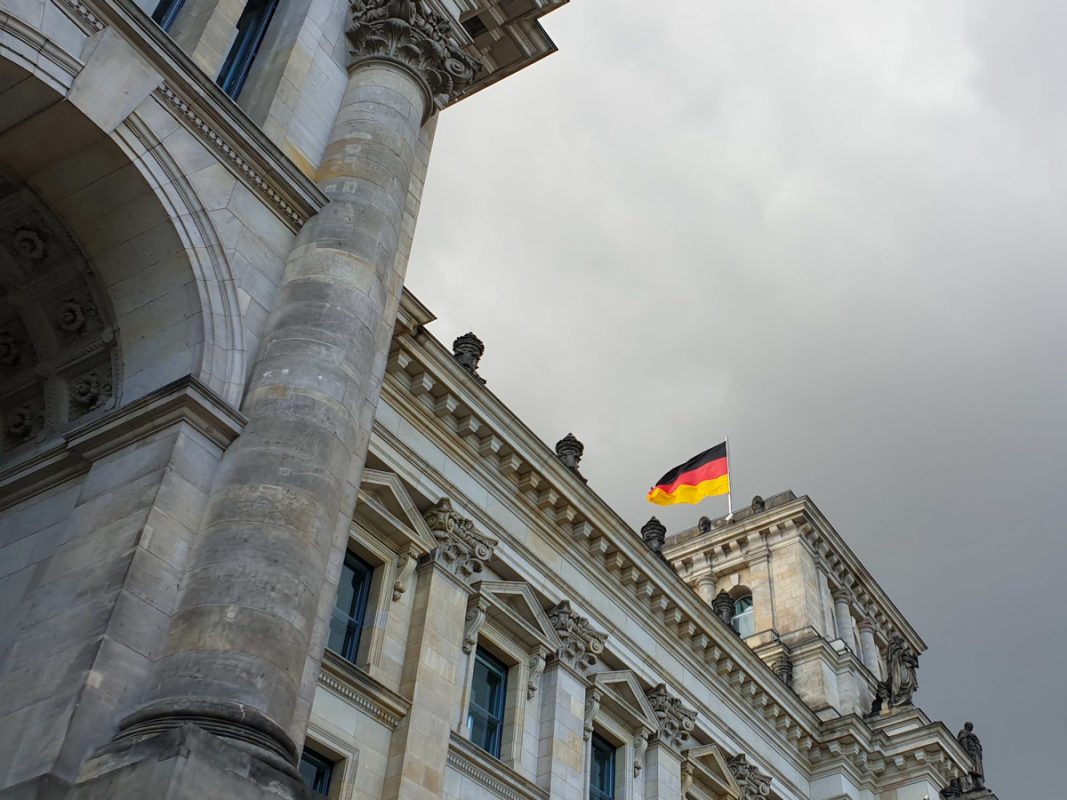Are you thinking of visiting Berlin in November? Here’s why you should!
Germany’s capital, Berlin, is a city that truly shines in all seasons.
While many argue that summer’s when it’s at its best – when the parks come to life and open-air events happen – for me, there’s a particular charm in the cooler season.
It’s during this season when the temperatures drop and spending time inside becomes more appealing.
But while Berlin’s great to enjoy outside, it has so many museums and indoor attractions that make it an excellent cold-weather destination.
November is right in the lull of the low season. The summer and early fall tourists are long gone, but the Christmas rush has not yet begun.
This means fewer crowds and cheaper prices.
But there are also a few things specifically happening in Berlin in November, including the anniversary of the fall of the Berlin Wall and the start of festive markets.
I visited Berlin one November and became completely enamoured with the city during this month.
You don’t need great weather to enjoy Berlin – it’s a city with so many layers that shine all year round.
So, here’s why you should add Berlin in November to your travel list!
Reasons to visit Berlin in November
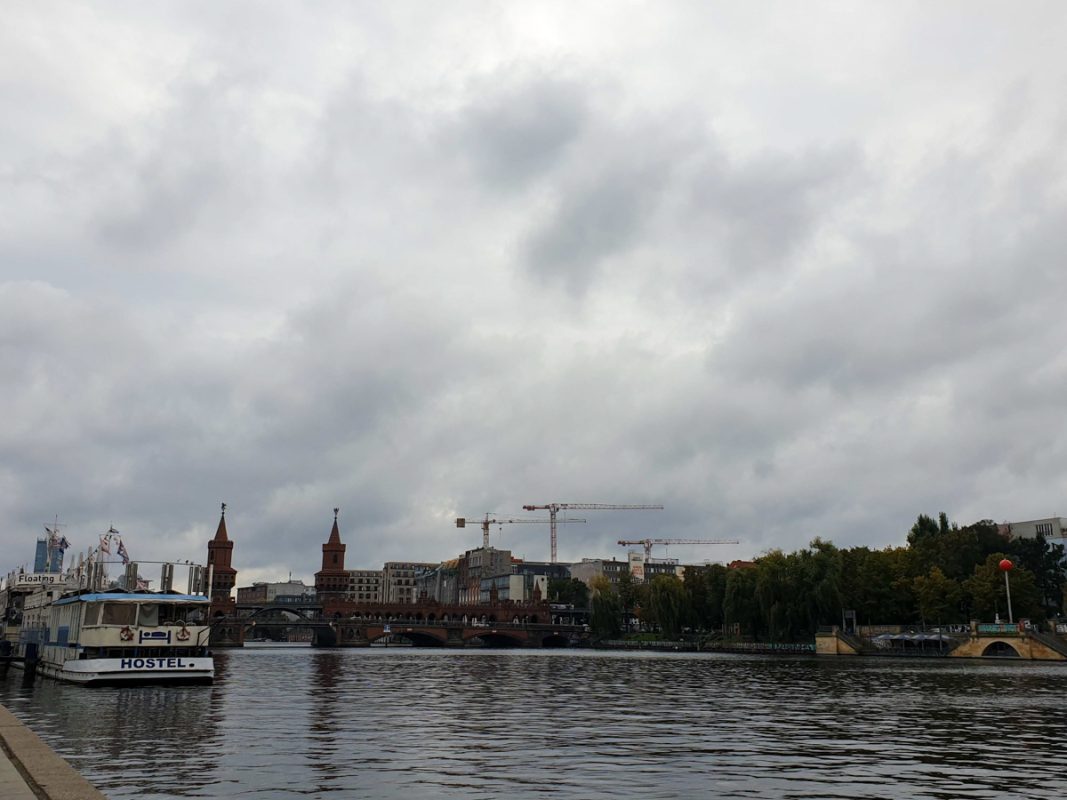
From unique festivals to the myriad of indoor attractions, here’s what you can expect from a city break to Berlin in November.
Jazzfest Berlin
The unmistakable rhythms of Jazzfest Berlin resonate in the city as November descends.
This long-standing cultural event, one of the largest of its kind in Europe, gathers some of the most innovative names in jazz from across the globe.
Taking place in early November, it’s an aural banquet of distinctive sounds and creative improvisations, reflecting the diverse world of contemporary jazz.
The festival typically takes place over four to five days, transforming various venues in Berlin into vibrant jazz hubs.
Mainly taking place at Haus der Berliner Festspiele, the festival pulses with the dynamic energies of both established jazz maestros and budding talents.
The line-up is consistently impressive, boasting a carefully curated selection of jazz acts that span an array of styles and techniques.
You can read more about Jazzfest Berlin here.
There are countless museums

November’s chill offers an opportune moment to delve into Berlin’s museums.
The city’s home to more than 170 museums, providing a vast array of knowledge of history, art, culture, science and technology.
Among the most renowned institutions is the Pergamon Museum, located on Museum Island, a UNESCO World Heritage Site.
Here, you’ll be transported back to the ancient world, with significant archaeological displays that include the Pergamon Altar and the Ishtar Gate of Babylon.
Another treasure trove is the Neues Museum, which houses an extensive collection of Egyptian art, including the bust of Queen Nefertiti, one of the most famous pieces of Egyptian art.
But my personal favourites are all the modern history museums.
Much of the 20th century’s main historical events focused on Berlin, and the city’s done well to acknowledge its past.
The Memorial to the Murdered Jews of Europe is particularly poignant, along with the attached museum which documents the horrors of the Holocaust.
The Stasi Museum in East Berlin was fascinating. It detailed the East German secret police and how they operated.
I also found the DDR Museum exceptionally interesting; it details life in former East Germany, including all the differences between East and West.
Then, there’s the ever-quirky David Hasselhoff Museum – my partner and I visited this while we were in Berlin and were talked into buying tickets for a David Hasselhoff concert!
I went to Warsaw after Berlin and found the museums here to be equally as fascinating.
Fewer tourist crowds
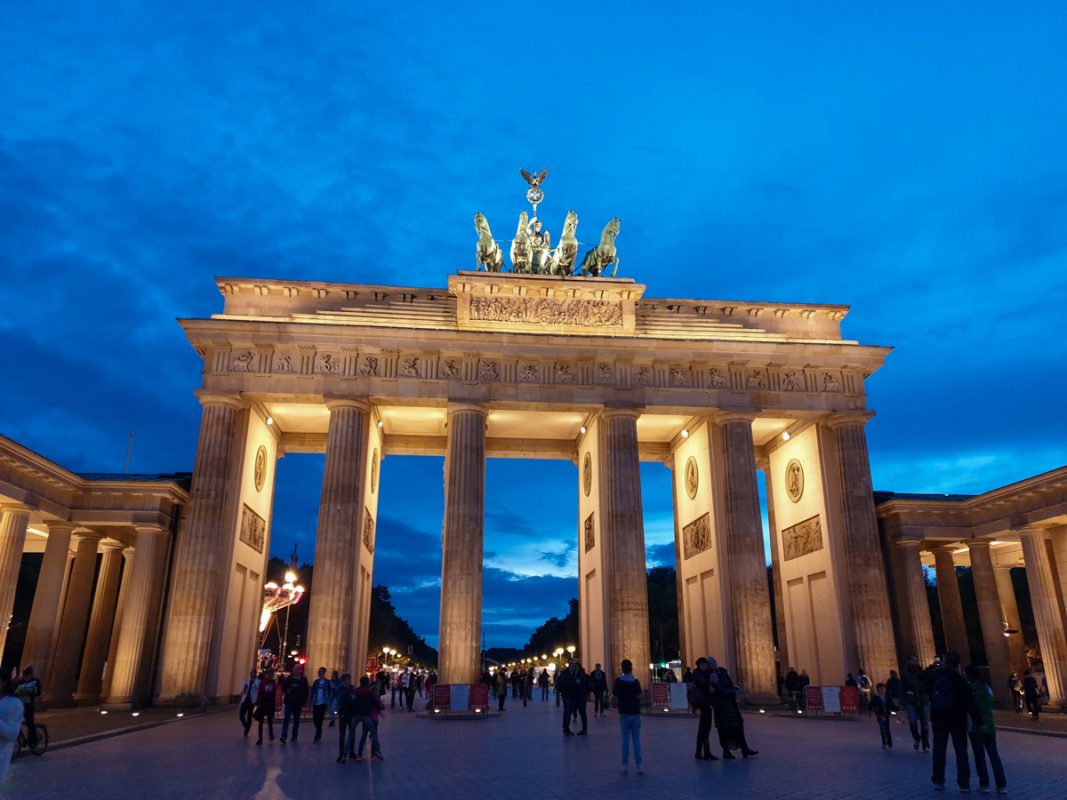
There are noticeably fewer tourists in Berlin in November when compared to the summer season or even December when the Christmas crowds arrive.
One of the main reasons for this is the weather – Berlin isn’t one of Europe’s warmest November destinations, that’s for sure!
But Berlin has so many attractions that poor weather doesn’t matter!
You can stroll around Museum Island, a UNESCO World Heritage site that is home to the Pergamon Museum and the Neues Museum, without jostling with crowds.
Similarly, when wandering the iconic East Side Gallery, you can take your time admiring the historical murals – it’ll be much easier to get the iconic snap of “The Kiss” with fewer people!
Catch an uninterrupted view at the iconic Brandenburg Gate and queue for less time at the TV Tower or Checkpoint Charlie.
Berlin in November is much more laid back!
Interfilm Berlin
In the world of cinema, Berlin’s November calendar is highlighted by the city’s International Short Film Festival, known as Interfilm Berlin.
This acclaimed event draws both film enthusiasts and industry professionals to engage with over 500 short films presented in a vibrant array of competitions and special programmes.
Held across multiple venues throughout the city, the festival presents films spanning every genre, from drama and comedy to animation and documentary.
They’re gathered from every corner of the globe, demonstrating the diverse creative talents of filmmakers who are often at the forefront of cinematic innovation.
Click here to read more about Interfilm Berlin.
Autumn/Fall Colours
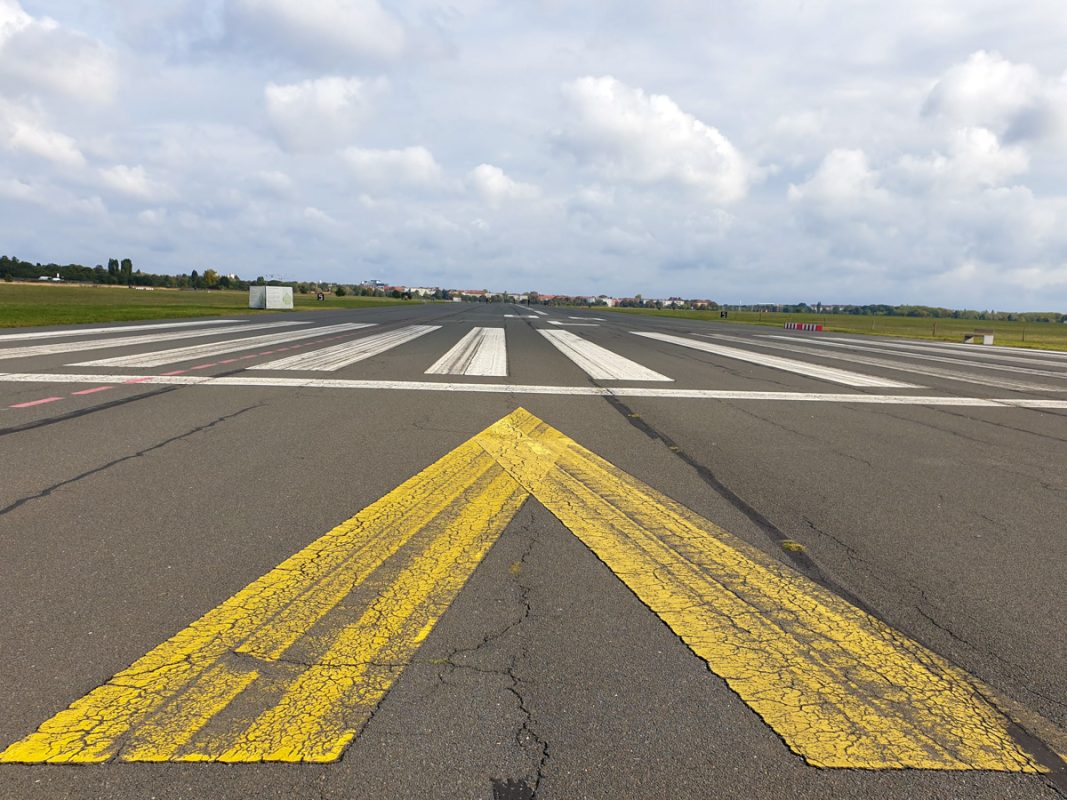
At the start of November, Berlin’s plentiful green spaces, including the sprawling Tiergarten and the vast Tempelhofer Feld, are draped in the striking hues of autumn.
This spectacle gradually fades as winter approaches.
To experience the crunch of leads underfoot and the rustle of towering trees resplendent in reds, oranges, and golds, head to Tiergarten, Berlin’s most beloved park, stretching almost 3 kilometres through the heart of the city.
Similarly, the open expanses of Tempelhofer Feld, a former airport turned public park, offer a different, yet equally compelling, autumn experience.
With its wide, runway-like paths, the park is popular for cycling, skating, and walking.
The lack of dense tree cover here offers an unobstructed view of the sky, often ablaze with stunning sunsets that mirror the warm tones on the ground.
Fall of the Berlin Wall Anniversary
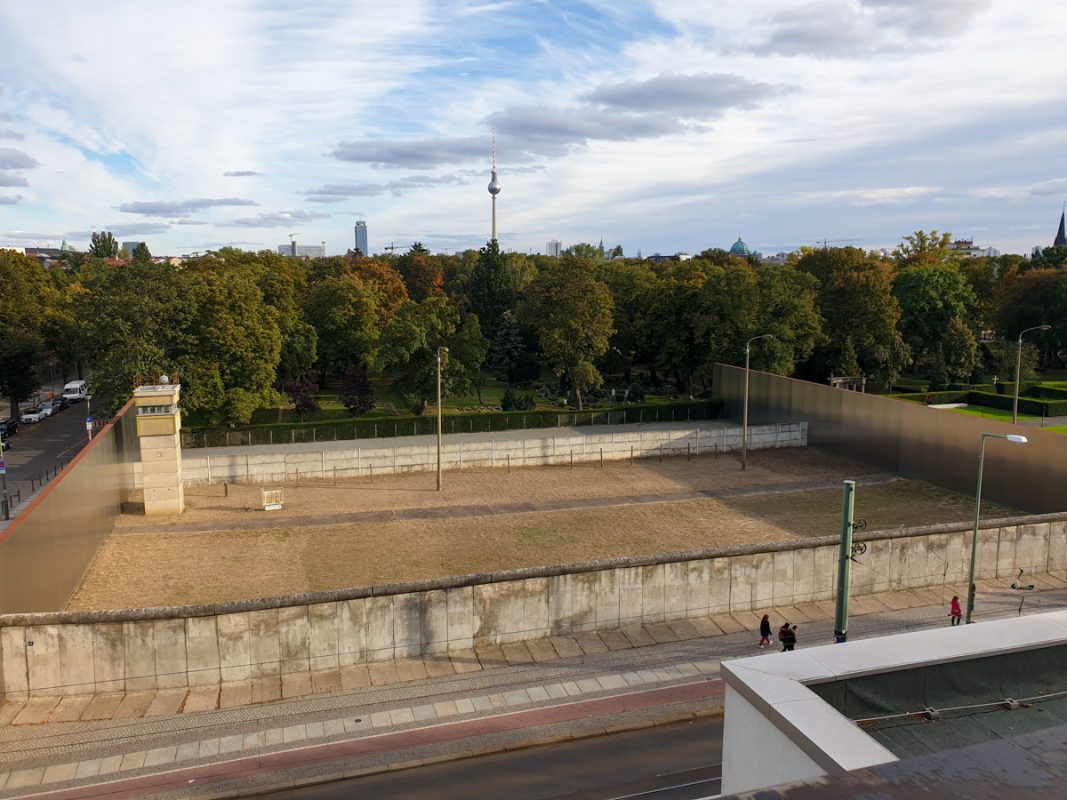
With November rolling in, Berlin dons a contemplative mood as the city marks the anniversary of the fall of the Berlin Wall.
Taking place on 9th November 1989, this historical event was a turning point not just for Germany but for the world.
The day’s commemorative events provide a deeper understanding of Berlin’s complex history and its journey from division to unification.
The Berlin Wall Memorial, situated in the heart of the city, is a pivotal location for the anniversary’s observances.
Exhibitions here evoke the harsh realities of the divided city, with remnants of the Wall, watchtowers, and personal stories painting a vivid picture of Berlin’s past.
Consider joining a Communist walking tour to delve deeper into the city’s history during this period.
These guided walks take you along the path of the former Wall, highlighting historical landmarks, poignant stories, and the remnants of the Cold War era.
However, this day of reflection and remembrance was not chosen as the date to celebrate the reunification of Germany.
Deemed too sombre, given its significance and the pain associated with the Wall, the official German Unity Day is celebrated instead on 3rd October – 3rd October 1990 was when the country officially reuinted.
Berlin Fairy Tale Days
Berlin transforms into a magical land of make-believe during the annual Berlin Fairy Tale Days.
This enchanting festival, which takes place over two weeks in November, is a delightful blend of international fairy tales and folklore, engaging both children and adults.
With the city as its stage, the festival brings to life enchanting tales through a series of imaginative events.
There are engrossing readings by authors and actors, shedding new light on old favourites and introducing lesser-known stories from diverse cultures.
In addition, there are a variety of performances including plays, puppet theatre, and musical acts that incorporate fairy tales into their repertoire.
Workshops are also a key feature of the festival, offering both children and adults the chance to delve deeper into the magic of storytelling.
Through interactive activities like story creation, illustration, and role-play, participants can discover their own storytelling abilities!
Read more about the festival by clicking here.
Start of the festive season
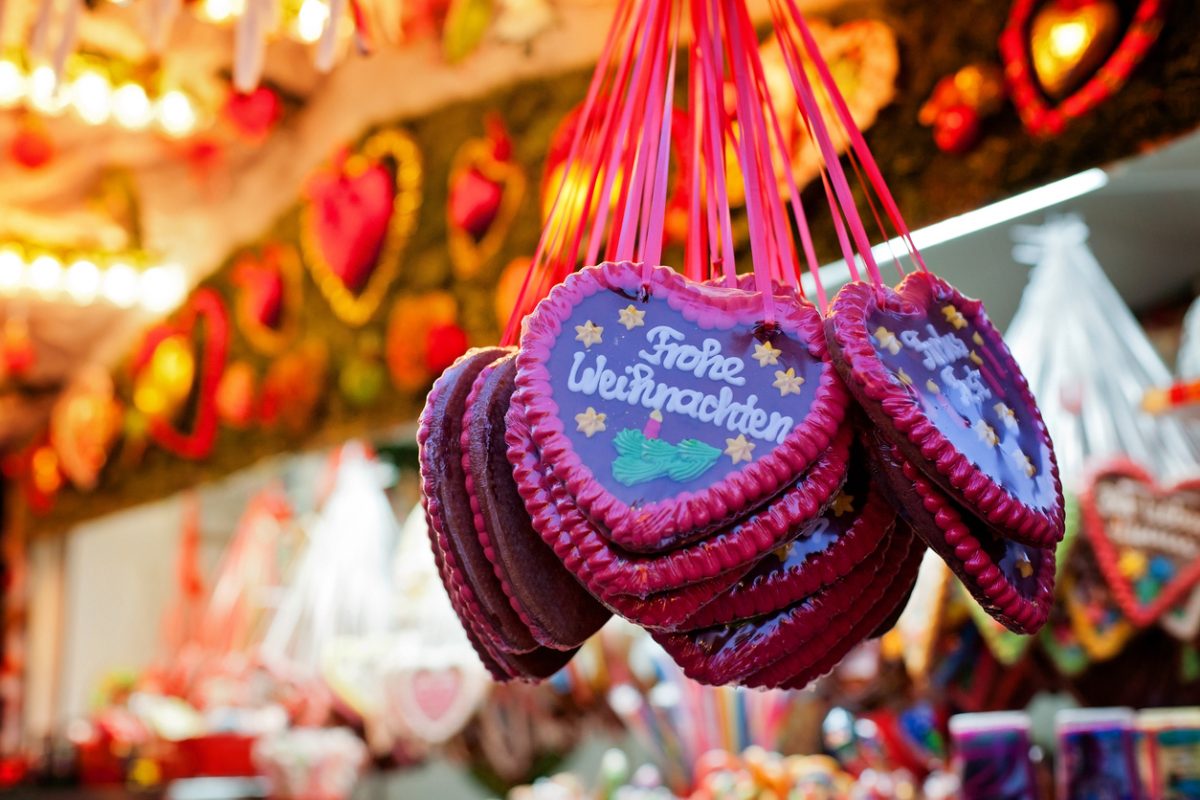
In November, a distinct shift happens in Berlin.
The city starts to shimmer with the early preparations of the Christmas season.
There’s a tangible sense of anticipation as the city gears up for the arrival of its famed Christmas markets – the most famous in Berlin being the WeihnachtsZauber Gendarmenmarkt.
These enchanting markets, well-loved by both locals and tourists alike, typically begin to open their doors towards the end of November.
Christmas markets in Germany are a full-fledged cultural experience.
With a myriad of stalls selling a wide range of handmade crafts, unique trinkets, and delightful Christmas ornaments, the markets are a treasure trove for those in search of distinctive gifts.
Yet, it’s the all-encompassing festive atmosphere that sets these markets apart.
As you stroll among the market stalls, you’re likely to be lured by the irresistible aroma of Glühwein (mulled wine).
Or, savour other quintessential German Christmas treats such as Lebkuchen (gingerbread) and Bratwurst (grilled sausage).
And it’s not just about the food and shopping.
These markets are often set up against the backdrop of Berlin’s stunning landmarks, offering an atmospheric setting where you can bask in the early signs of the holiday season.
Twinkling lights, seasonal melodies, and cheerful camaraderie are plentiful.
Plus, late November is usually the quietest time to visit the Christmas markets – by December, they can be hectic!
What is the weather like in Berlin in November?
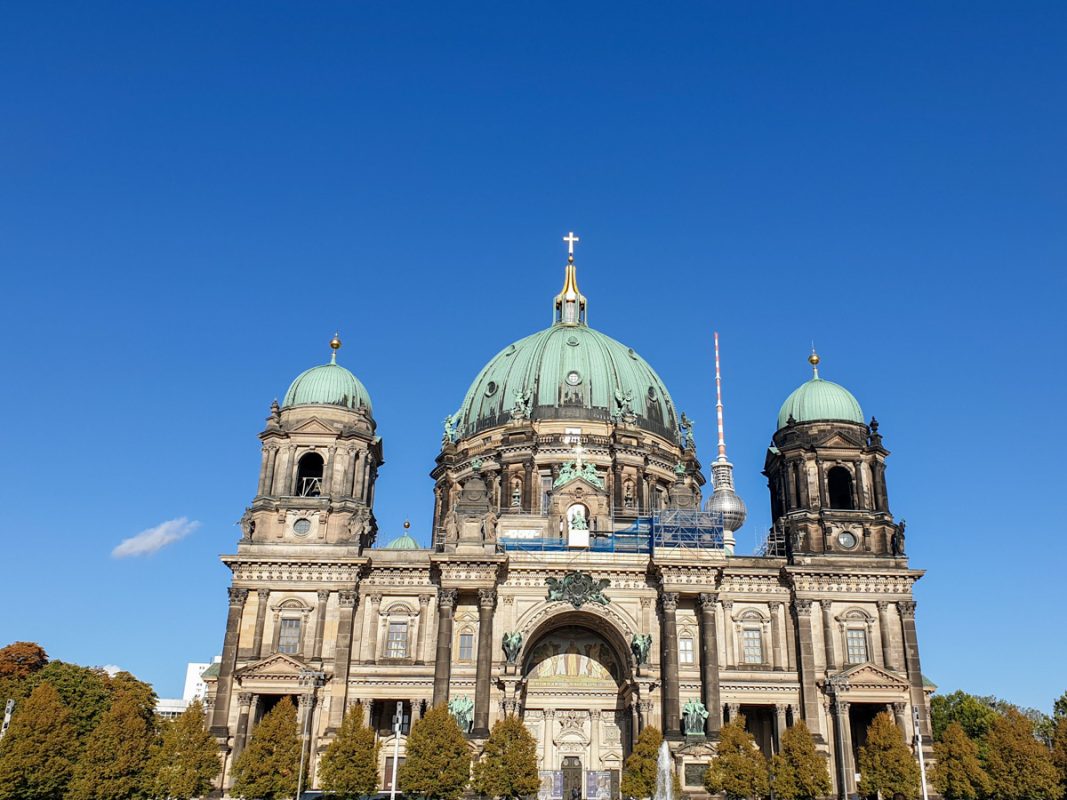
As November transitions autumn into winter, Berlin experiences a significant drop in temperature.
Temperatures aren’t biting, but they are chilly – and rain’s relatively common. Snow, however, is rare – if you want to see the white stuff, you’ll have to head further south, to the German Alps!
| Average High | 7°C (44.6°F) |
| Average Low | 2°C (35.6°F) |
| Days of Rain | 10 |
| Days of Snow | typically less than a day |
What to pack for Berlin in November
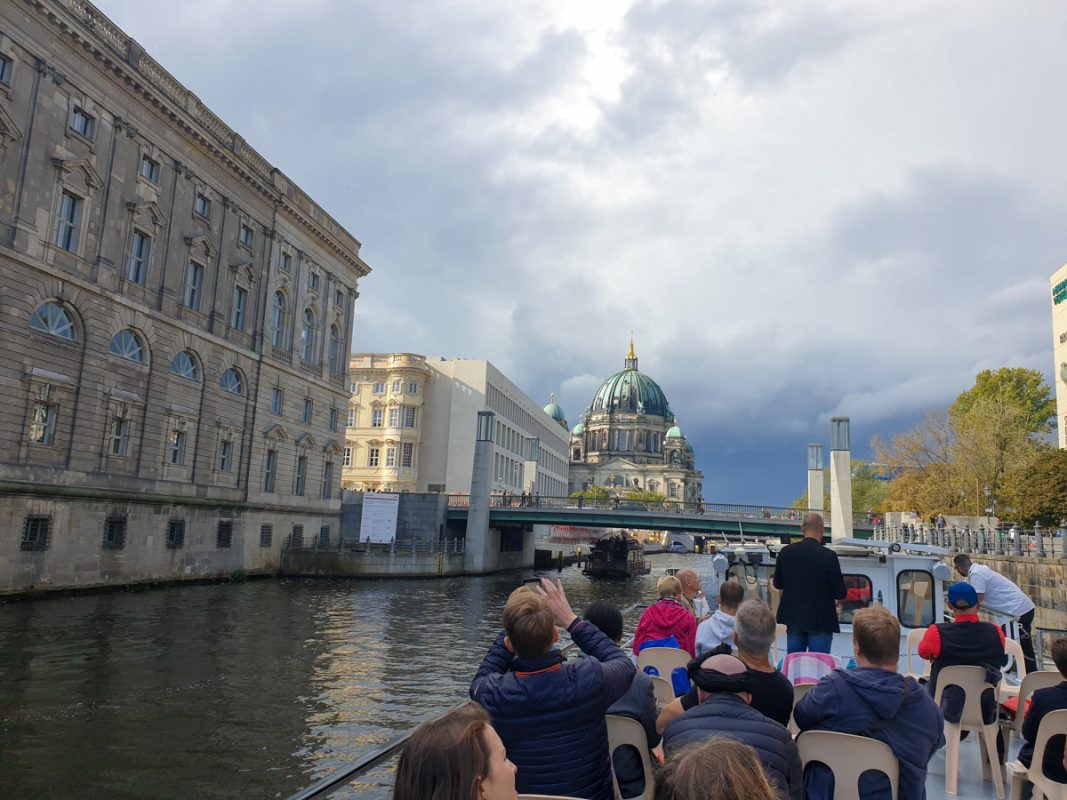
Berlin’s November weather requires careful packing!
Warmth is key, so ensure a heavy coat or jacket finds its way into your luggage. The chill can be unforgiving and a good-quality outer layer is the first defence against the cold.
Clever use of layered clothing offers versatility for changing conditions. Indoors tend to be well heated, so having the option to shed thermal tops or sweaters ensures comfort from the chilly streets to the cosy indoors.
Berlin beckons you to walk its historical lanes and modern streets, making comfortable walking shoes a must-have for exploring this city’s treasures.
Accessorise with warmth in mind, scarves, gloves, and hats are as practical as they are stylish, essential for those colder November days.
Don’t let a little rain dampen your Berlin adventures, an umbrella or raincoat has got you covered when November’s showers arrive.
The cold weather can be harsh on your skin, so remember to pack lip balm and moisturiser to protect from the chill, ensuring you’re focusing on the sights rather than combating dry skin.
Things to do in Berlin in November

There are so many things to do in Berlin, but here’s a quick list of some of my favourite attractions and activities!
- Take a moment of reflection at the Memorial to the Murdered Jews of Europe, a sobering monument in the heart of Berlin.
- The Brandenburg Gate, Berlin’s iconic landmark, is a must-visit, particularly stunning when illuminated at night.
- Discover Germany’s rich and diverse history at the German Historical Museum, which offers a comprehensive look at over 2,000 years of German history in a global context.
- Explore the Museum Island, a unique ensemble of five museums on Spree Island, including the Pergamon Museum and the Neues Museum.
- Visit the East Side Gallery, the longest open-air gallery in the world, displaying over 100 murals painted directly on a 1.3 km section of the Berlin Wall.
- Embark on a journey through time at the Berlin Wall Memorial, commemorating the division of Berlin by the Berlin Wall and the deaths that occurred there.
- Ascend the Berlin Television Tower for a panoramic view of the city, enjoying a meal or drink at the rotating restaurant.
- Enjoy the grandeur of Charlottenburg Palace, the largest palace in Berlin, and take a leisure stroll through its beautifully landscaped gardens.
- Immerse yourself in the arts at the Berlin Philharmonic, one of the most acclaimed orchestras in the world, performing in an architectural masterpiece.
- Uncover the world of espionage at the German Spy Museum, revealing the history of espionage from biblical times to the modern digital age.
- Spend an afternoon wandering through the Tiergarten, Berlin’s most popular inner-city park, particularly enchanting with autumn colours in November.
- Visit Checkpoint Charlie, the most famous former border crossing between East and West Berlin during the Cold War.
- Be amazed by the rich collection of European painting at the Gemäldegalerie, home to masterpieces from the 13th to 18th centuries.
- Explore the dynamic and cosmopolitan neighbourhood of Kreuzberg, known for its vibrant nightlife, food scene, and diverse culture.
- Step into the world of technology at the German Museum of Technology, showcasing a large collection of historical technical artefacts.
- Experience the cultural diversity of Berlin by visiting the Turkish Market at Maybachufer, offering a variety of goods from food to fabric.
- See a show at the Friedrichstadt-Palast, Europe’s largest show palace, renowned for its extravagant and glamorous shows.
- Stroll along Unter den Linden, the historic heart of Berlin, where you can find landmarks like the Brandenburg Gate and Humboldt University.
- Enjoy a boat ride along the River Spree, a unique way to see Berlin’s landmarks, from the modern government quarter to the Museum Island.
- Head to Potsdamer Platz, a symbol of urban renewal in Berlin, offering shopping, entertainment, and architectural attractions.
Things to remember when visiting Berlin in November

Here are a few pointers to consider when visiting Berlin in November.
- Seasonal Variations: November is a transition month in Berlin. Early November often sees the tail-end of autumn/ fall, with leaves still changing colours, while late November tends to be colder, with the first signs of winter appearing.
- Pack Warmly: The weather can be quite chilly, so packing appropriately with warm clothing like jackets, scarves, hats, and gloves is crucial.
- Be mindful of ice: Even if it’s not snowy, pavements can be icy. If you’re walking around the city, be mindful of this and wear shoes with good grip.
- Prepare for Rain and Possibly Snow: Rainfall is moderate, so carrying an umbrella or raincoat is advised. Snow isn’t regular, but it can occasionally appear towards the end of the month.
- Limited Daylight: Daylight hours are less in November. Sunrise is usually around 7-8 am, and sunset can be as early as 4-5 pm. Plan your outdoor activities accordingly.
- Public Transport: Berlin’s public transport is efficient and reliable. It’s the easiest way to get around the city, especially in colder weather.
Visiting Berlin in winter FAQs
Below are some answers to popular questions about visiting Berlin in winter.
Is November a good time to visit Berlin?
Yes, November is a good time to visit Berlin. It’s the start of the festive season, with some Christmas markets opening towards the end of the month.
Events like Jazzfest Berlin and Interfilm Berlin take place in November, and the city’s museums and historical sites can be explored without the summer crowds.
Is Berlin too cold in November?
The weather in November in Berlin can be quite chilly, with average high temperatures of around 8°C (46°F) and lows around 3°C (37°F).
However, it is manageable, particularly for those used to cooler weather – it’s about the same as London in November. Wearing appropriate layers and winter gear can make your visit comfortable.
Is Berlin rainy in November?
Berlin in November experiences a moderate level of rainfall, with around 10-15 days of the month seeing some rain.
The weather can be quite changeable, so carry an umbrella or wear water-resistant clothing.
What should I wear in Berlin in November?
Pack plenty of warm clothing! I recommend dressing in layers, with a heavy jacket or coat, scarves, hats, and gloves.
A good pair of comfortable, water-resistant shoes is also advisable for walking around the city.
Are there Christmas markets in Berlin in November?
Yes, some Christmas markets in Berlin open towards the end of November, marking the beginning of the festive season.
These markets offer a wide range of goods, from handmade crafts to traditional German Christmas treats, in a beautifully lit and festive atmosphere.
Are you ready to visit Berlin in November?
Although I flew to Berlin from the sunny south of Europe, I was absolutely fascinated by the city in November.
There’s always something to do in Berlin, and the unique festivals and celebrations in November, along with fewer crowds, make it an excellent month to be in the German capital.

